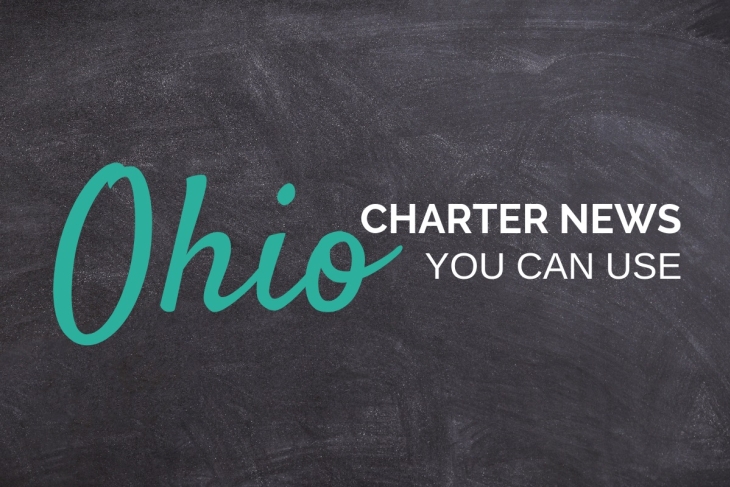- States weigh their options to comply with Biden’s request that standardized testing resume this year. —EdWeek
- Iowa’s governor signed a bill requiring all schools to offer in-person instruction five days a week, overpowering reluctant school boards and teachers unions. —Washington Post
- “For some Black students, remote learning has offered a chance to thrive.” —NPR
- Policymakers should fund career and technical education to boost the income and marriageability of young men. —AEI
- Richard Carranza resigns as NYC School Chancellor after disagreements with Mayor Bill de Blasio over gifted and talented programs and school segregation. —New York Times
- Only 37 percent of kindergarteners are on track to be proficient readers, compared to 55 percent last year. Gaps are especially pronounced for Black and Hispanic students. —The 74
- A proposed bill in Oregon would allow school administrators to retain teachers based on merit and race/ethnicity instead of seniority when budget crises require layoffs. —MSN News
- Philadelphia parents are frustrated with school closures, and are running for office, opting for private school, and taking other actions. —New York Times
- No, it’s not racist to discuss achievement gaps or how to close them. —Ed100 Blog
- States did not lose as much tax revenue as we may have feared, with some actually taking in more money in 2020 than in 2019. —New York Times
- Our nation’s struggle with the pandemic was caused, in part, by poor leadership. But it was also a result of the inherent fragmentation of decision making in American federalism. —Matthew Yglesias
It’s state budget time in Ohio, and as experts like to remind us, budgets reflect priorities. In the area of K–12 education, legislators should maintain a focus on empowering parents to take more control of their kids’ education and improving the educational outcomes of less advantaged students.
On both counts, public charter schools—also known as “community schools”—are answering the call. In terms of meeting parent needs, these independently-run, tuition-free schools have long offered choices that allow families to find a school that works for them. Some have benefitted from specially designed charters that tap into students’ artistic talents or nurture their academic gifts. For others, a charter school has meant a fresh start after rocky experiences in their local district.
Due to longstanding geographic restrictions, Ohio charters serve predominately disadvantaged students. And there is clear evidence that they’re getting results. A study by CREDO found that Black students fare better when they attend an Ohio charter school (as opposed to a district school). Likewise, a more recent report by Ohio State University professor Stéphane Lavertu estimated that the average Black student moves from the 25th to 40th percentile in statewide achievement by attending a brick-and-mortar charter in grades four through eight.
Despite these undeniable benefits, charters are still treated like second-class schools. Ohio’s urban charters receive on average about $4,000 per student less funding than urban traditional districts. The disparity is driven by charters’ lack of access to local tax revenues—which account for on average just over 40 percent of district funding—and the state’s decision not to fill the hole. These funding gaps are problematic in two ways. First, they violate the basic principle of equity. Students of similar backgrounds should be funded at comparable levels, but charters receive far less than their district counterparts to educate the same child. Second, these gaps disadvantage charters in retaining talented teachers, providing essential supports, and ensuring students learn in properly-equipped school buildings.
What can state legislators do to rectify these problems and more fully leverage the charter model to meet parent and student needs? Here are four ideas.
- Make the Quality Community School Support Fund permanent. In 2019, Governor DeWine proposed and shepherded through the legislature a new funding stream that supports high-performing charters. During FYs 2020–21, this $30 million per year program provided up to $1,750 per economically disadvantaged student to roughly a quarter of Ohio’s best charter schools. Given the budgetary constraints facing charters, these extra funds are vital to increasing their capacity to scale and serve more students. The governor’s FY 2022–23 budget rightly reauthorizes this program. Legislators should not only approve these funds, but go one step further by making it part of the permanent charter school formula (rather than funding it as a standalone appropriation).
- Treat charters fairly in the state funding formula. The current funding formula provides charters with full base amounts in the major components of the formula. For instance, recognizing that charters have no local tax authority, Ohio allots the entire $6,020 per student base amount for their Opportunity Grant—the component that delivers the bulk of state funding to both districts and charters. Even though charters receive full base funding, they still miss out on tens of millions in local revenues. Legislators could narrow funding gaps by setting charters’ base amounts somewhat above districts, or by including a multiplier that applies only to charters. What legislators shouldn’t do is treat charters as inferior, as is the case for House Bill 1—a House rewrite of the school funding formula. Under that proposal, charter schools would receive 10 percent less funding in three of the cost components that determine base amounts. Policies such as these would widen funding gaps, not narrow them.
- Provide adequate resources for school facilities. As several reports have documented, Ohio charters face an uphill battle securing suitable facilities. Their challenges are rooted in policies that shut charters out of the state’s main school construction program, deny them a share of local capital improvement levies, allow districts to withhold underutilized buildings, and provide them with inadequate facility specific funding. Legislators should pursue various policy avenues to better meet facility needs. First off, they should significantly increase the Community Schools Facilities allowance that currently provides a modest $250 per student—well below annual facility costs. Legislators should also invest in solutions that address capital needs on a broader scale, such as allowing charters to tap state construction dollars. Lastly, legislators should consider programs that lower the cost of debt through “credit enhancement,” as other states have done.
- Ensure local tax dollars follow students to their school. Courageous lawmakers could get to the root of the problem—charters’ lack of local funding—and require local tax revenues to follow students to public charter schools. This would adhere to the principle that funds—yes, all funds—should follow students to the schools they actually attend. It would also be fairer to charter school parents who pay local taxes, whether directly or through rent. To be sure, this would be a heavy political lift and likely require technical changes to the state’s charter funding model (to account for newfound local revenues). But a true “fair funding” plan for all public school students—and their parents—would guarantee that dollars from every level of government follow students to the school they attend.
***
Ohio legislators should be laser focused on empowering parents and accelerating learning for needy students. By further leveraging the proven power of the charter school model, Ohio will take strides in creating a more student- and parent-centered system of public schools.
- Some testimony was heard in the legislature this week on the latest version of a school funding overhaul bill, including from our own Chad Aldis. Gongwer’s coverage of the hearing focuses a lot on charter school supporters’ testimony—which boils down essentially to ways of undoing the huge gap between funding for charters and traditional district schools—but Chad was quoted as talking about some of the positives in the bill and about the plan’s gigantic overall price tag. (Gongwer Ohio, 3/1/21)
- Hold onto your hats for this one: More seniors in Columbus City Schools are reportedly on track to graduate this year than at this same time in 2019, long before anyone had ever heard of SARS-CoV-2. Bombshell, right? “It's good to be at 55 percent,” said the district’s Supervisor of School Counseling and Student Support Services, adding that “we're not done. We (still have) the quarter to go. And I think there’s things in the works that will hopefully accelerate and raise that number, a lot.” If you’re like me, you might feel a little unsettled by that last cryptic comment, seeing as how some of the things the district has already done to get them to this lofty point are to “waive two graduation requirements” and to “adjust grading”. And seeing as how this monstrosity is being heard in the legislature right now. (Spectrum News 1, 3/1/21) It is noted in the above piece that Columbus City Schools seniors are still, with a handful of exceptions, learning fully remotely. They are scheduled to shift in phases to a hybrid learning model starting March 15. But there are already huge logistical difficulties transporting the elementary students who started back in hybrid mode this week, and those do not look to be abating for district, charter, or private school students anytime soon. The district is buying public transit passes for its own students (no word on passes for charter or STEM schoolers already going to school) in advance of their return in an effort to do…something. (Columbus Dispatch, 3/3/21)
- Day One of in-person schooling in Dayton seems to have gone pretty well—minus afternoon busing—but that likely would have been a problem even if the district wasn’t jumping directly from fully-online to fully in-person in one fell swoop. (Dayton Daily News, 3/1/21)
- While Dayton’s superintendent says that hers is a school district “that needs to be face to face” (and she vows never to go back to remote again), fully-online education in Parma City Schools is a big old hit and will continue for the foreseeable future for any kids who want it. “It’s built to last,” said the district supe. “It’s something that can serve our Parma families much better than previously when they just had to find a charter school if they wanted that type of remote education.” Well, isn’t that just precious? (Cleveland.com, 3/3/21)
Did you know you can have every edition of Gadfly Bites sent directly to your Inbox? Subscribe by clicking here.
NOTE: On Monday, March 1, 2021, members of the House Finance Subcommittee on Primary and Secondary Education heard testimony on House Bill 1, which would create a new school funding system for Ohio. Chad L. Aldis, Fordham’s Vice President for Ohio Policy, gave interested party testimony before the subcommittee. These are his written remarks.
Thank you, Chair Richardson, Ranking Member Troy, and House Finance Subcommittee on Primary and Secondary Education members, for giving me the opportunity to provide interested party testimony today on House Bill 1.
My name is Chad Aldis, and I am the Vice President for Ohio Policy at the Thomas B. Fordham Institute. The Fordham Institute is an education-focused nonprofit that conducts research, analysis, and policy advocacy with offices in Columbus, Dayton, and Washington, D.C. Our Dayton office, through the affiliated Thomas B. Fordham Foundation, is also a charter school sponsor.
The Fordham Institute has long advocated for reforms that put Ohio students and parents at the center of school funding policy. We strongly support principles such as “funds following students” to the schools in which they actually attend, and “weighted student funding,” in which extra resources are devoted, for example, to low-income, special-education, and English language learning students.
The plan before you in HB 1 proposes some important improvements that would better align Ohio’s funding system with these core principles. We strongly support the following aspects of the plan:
- Funding all school districts via the funding formula, instead of through caps and guarantees. A good funding formula drives resources to the places that most need state support. Ensuring that the formula is actually being used to determine funding amounts is critical to a fair, well-functioning system. While this is a stated goal of the system being proposed in HB 1, it does appear to maintain guarantees through its use of targeted assistance dollars when district residents use a non-district education option and by providing temporary transitional aid to districts based on funding levels from three years prior.
- Increasing the funding for economically disadvantaged students. To its credit, Ohio has long recognized the additional costs of supporting low-income students, and the funding plan in HB 1 builds upon this system by increasing the categorical amounts for disadvantaged students. This is a really important change. We urge the House to go a step further and base the count of low-income students—currently exaggerated by the use of Community Eligibility Provisions to distribute more free lunches—on direct certification of students based on participation in other assistance programs. This shift would better target dollars to the neediest students and might even allow an increase in the $422 base amount for economically disadvantaged students.
- Funding schools of choice directly rather than through a “pass-through” method, whereby charter and voucher students are first counted in their home district and then funds designated for their education are deducted. Moving away from the current model would be a step in the right direction, but as I’ll discuss in more detail later the shift must be done with utmost care.
Of course, there is always room for improvement, especially with something as complicated as a school funding plan. Here are a couple of concerns that we have:
- Uncertainty about a funding source. Even with a proposed six-year phase-in, the $2 billion per year sticker price (more, according to some estimates) will be a heavy lift for future General Assemblies. Is it fair to kick that can down the road to future lawmakers? Will they be pressured to raise taxes to fully implement the plan? If so, which ones? Will funding need to be cut for other programs? Again, which ones? If legislators are unable to fully fund the significant outlays demanded under this proposal, will they be accused of failing to properly fund Ohio schools? Could the state be subject to another round of school funding lawsuits because this plan sets a specific cost for educating a student and then doesn’t meet it? The Ohio Constitution doesn’t appear to allow for “phase-ins” of a constitutional funding system.
- Interdistrict open enrollment. While the plan’s approach to funding students based on where they attend school is commendable, it should not create disincentives for districts to accept non-resident students. It appears that wealthier districts will be heavily disincentivized from participating in open enrollment and providing important opportunities to students from higher poverty districts. This could reduce the already limited options available to families in some areas. We suggest either retaining the current funding structure for open enrollment or developing an alternative calculation methodology as appears to have been done for some career and technical centers.
As for charter schools, we’ve written extensively on the large shortfalls, relative to their local district, that they face in terms of overall taxpayer funding. Despite educating children of similar backgrounds, brick-and-mortar charters in the Ohio Eight receive on average about $4,000 per-pupil less than their local district. The discrepancy is due to the fact that local funding, with limited exceptions, does not follow students to charter schools.
As a matter of fairness to charter students—most of whom come from low-income families or are students of color—the state should work towards funding equity for charters. While HB 1 improves upon the initial version of the plan that was in HB 305, the treatment of public charter schools remains concerning. On a positive note, recent estimates indicate that Ohio Eight charters would see an average funding increase of $1,389 per pupil under this plan. This is a step in the right direction. Unfortunately, the plan does not narrow funding gaps between Ohio’s urban charters and urban districts. Because the average funding for Ohio Eight districts increases $1,713 per pupil, the funding gap actually grows.
This inequity puts charters at a tremendous disadvantage relative to their nearby districts in competing for talented teachers and offering comparable academic and non-academic supports. Also worth noting is the relatively small increases that general-education charter high schools would see under the proposal, often below $1,000 per pupil. One of the state’s finest urban high schools—Dayton Early College Academy (DECA)—actually loses $82 per student under the plan.
Leveling the playing field between charters and districts is a heavy lift, but the following tweaks to the funding plan would improve equity for charters:
- Calculate charters’ base costs in exactly the same way as districts. To its credit, the updated plan generally moves charters into the same base-cost model as districts. But, without any obvious policy rationale, it doesn’t provide full base amounts in three of the cost components. It also appears to exempt charter schools from some minimums when determining the number of special teachers funded. If the plan has indeed captured the costs of educating a student, it should apply to charters just as it does to districts.
- Revisit the base cost model for operating high schools. The base cost model calls for fewer teachers per student in grades 9-12, hence lowering the assumed costs. Such an approach might be okay for entire districts, which can redistribute centralized resources to high schools, but it could hurt standalone high schools that often face higher costs. For instance, high schools may need to purchase expensive science equipment, pay higher salaries to attract teachers, fund extracurriculars and athletics, and offer college and career counseling. Though it could further increase the plan’s price tag, it may be worth reviewing the cost assumptions for standalone high schools.
- Incorporate the recently enacted supplemental funding program for quality charters. With the backing of Governor DeWine, this $30-million-per-year initiative—increased to $54 million per year in the Executive Budget—provides up to an additional $1,750 per economically disadvantaged student to charters that qualify based on academic performance. These dollars help narrow funding gaps, provide extra resources that enable charters to serve more students, and make Ohio a more attractive locale for excellent national charter networks. HB 1 should include—and add to permanent law—this valuable charter funding initiative.
Finally, we recommend several changes to HB 1 to ensure that charters are treated fairly over the long term. They are as follows:
- Ensure charters are not subject to a line-item appropriation. In any move to directly fund charters, a concept that we support, clear statutory language must be used to ensure charters are funded through the main, multi-billion-dollar K–12 education appropriation in the state budget. HB 1 is a big improvement from HB 305 in this regard, but more can still be done. This could be accomplished by creating a new section that parallels existing statutory language used to fund school districts and joint vocational districts. In short, charters should never be funded via a line item that exposes them to unilateral budget cuts or a targeted veto.
- Remove language that calls for a study of charter school costs. The developers of this funding model have asserted that it captures the costs of educating a typical student. That model applies to all Ohio districts, large and small, urban and rural. If that model works for districts, why wouldn’t it apply to charters?
- Ensure charter representation on a School Funding Oversight Commission. The latest version of House Bill 1 calls for a commission that would make recommendations about how to adjust the formula in the years to come. Despite a rather large commission, charters would not be represented. If such a commission is deemed necessary, charters should have a seat at the table.
As a final note, you’ve probably noticed that my testimony doesn’t describe the current school funding system as unconstitutional. There’s a good reason for that. In a paper that we published in December, we think the scope of the legislative changes since DeRolph have given Ohio a fundamentally different school funding system than the Court examined in that landmark case. Assumptions that the current system is unconstitutional are just that—assumptions. That being said, we share the bill authors’ belief that the current funding system can and should be improved.
In conclusion, we believe that House Bill 1 has important strengths that would significantly improve the state’s funding system. Yet uncertainties remain around financing the plan’s costs and its approach to funding public charter schools. Thank you for the opportunity to provide testimony.
With Covid-19 cases dropping, teachers getting vaccinated, and new data and guidance coming in all the time showing that schools can operate safely with mitigation strategies in place, more Ohio schools are shifting to in-person schooling. For some families, that means a long-awaited return to a five-day-a-week in-person schedule. Their children will once again benefit from face-to-face learning and daily interactions with teachers and peers. Given the serious concerns about students’ academic and social-emotional well-being, this couldn’t come a minute too soon.
Sadly, other Ohio families won’t be as fortunate. Their schools will be open for in-person instruction a couple days a week, but remote learning will drag on in the form of “hybrid” models, a structure that is hard on both teachers and learners. As of the end of February, the Ohio Department of Education reported that one in three Buckeye districts were still using only remote or hybrid models without the option of full in-person education for any pupils.
The holdouts include some of Ohio’s largest school systems. In Columbus, for instance, elementary students recently began hybrid learning, but the district has no plans for returning to daily in-person instruction. Most Columbus high school students will remain in full remote mode until late March when they will finally transition to a hybrid schedule. But, again, no full-time option if you’re a district high school student, even as a number of private and public high schools have been fully open since last fall.
Cleveland recently unveiled its much-anticipated plan to begin in-person instruction, but that plan also centers on hybrids. For parents there, as in Columbus, the well-documented frustrations and learning losses associated with remote learning and “half-school,” as one parent recently put it, are sure to continue.
For now, the state is allowing this. For priority status in the state’s vaccination program, Governor DeWine asked schools to offer at least hybrid learning. That was a successful nudge for school systems to move away from fully-remote offerings and get some students back into classrooms at least part time. But it doesn’t help families who are sick of remote learning and want their children back in school full time.
What to do? One option, albeit blunt, is for lawmakers to wield their authority and require all schools to offer full in-person instruction to any family that wants it. This route—currently being discussed in Massachusetts—would be controversial, of course, likely provoking an outcry from district administrators and teachers unions. Another option is for parents to pressure their local school boards to reopen five days a week, something that’s happened in parts of Ohio and other places in the country.
Yet another possibility is to give families access to private schools that are open five days a week. As national surveys indicate, private schools are more likely to have continued to operate in person over the past year. That’s true here, too, as we see in a recent article from Southwest Ohio. In their enrollment efforts for next fall, those private schools have even promoted their ability to stay open and offer in-person instruction. The problem, of course, is that only families with the disposable income to afford tuition—or those who are eligible for the state’s private-school scholarships—have access to these schools. Under current law, EdChoice offers scholarships for students attending low-performing public schools or from low-income households.
A straightforward adjustment to Ohio’s EdChoice program could open private-school opportunities to parents who aren’t satisfied with the hybrid learning available at their district schools. State lawmakers need only expand scholarship eligibility to include any child attending a public school that is not offering in-person instruction five days a week. This is something that legislators in Georgia, Maryland, and New York have proposed. Students would immediately become eligible for an EdChoice scholarship if their public school offers only hybrid or remote learning opportunities. If legislation passes quickly, this could enable students to transfer to private schools later this spring. But given the time needed to enact bills, it would more likely apply to children whose schools announce they’ll start the year in remote or hybrid mode or switch to such learning models for an extended period during the year (absent a public health emergency declared by the governor).
Some will say that there’s no need to change the scholarship law because schools will surely be open in person, full time by autumn. If that turns out to be the case, terrific. We all want to see schools open and operating normally next year. But we can’t count on it. Some U.S. school systems are already planning for remote learning in fall 2021. Labor challenges could also impede progress in fully reopening schools. Returning to Cleveland, for instance, the local union immediately blasted the district’s reopening plan. “CTU members will return to in-person learning when it is safe for us and our students to return. Until then, we will continue educating Cleveland’s children remotely,” said its president.
Parents and students who want to be in a classroom shouldn’t have wait on the sidelines if their local district isn’t offering daily in-person instruction. That’s not to say parents should be rushed. Remote options should be offered until all families are comfortable sending their children to school. Some may have legitimate reasons to prefer the online version. But polls indicate that a sizeable number of parents (about one in three) want daily in-person instruction for their kids. That demand will only rise if cases continue to decline and schools prove that it’s possible to operate safely. The best way to ensure that all families have in-person opportunities—should they want them—is to empower parents with a full menu of public and private school options.
Last week, the Ohio House unveiled House Bill 110, the legislative vehicle for Governor DeWine’s budget proposal. The bill contains plenty of smart education provisions, including $1.1 billion in additional Student Wellness and Success funding, an increase in supplemental funding for high quality charter schools, and initiatives aimed at improving the technical skills of Ohio high schoolers and adults.
But tucked deep into the bill are troublesome changes to graduation requirements. At first glance, they seem small. But if they’re included in the final version of the budget, they’ll devalue an Ohio diploma and undermine years of work by a wide variety of stakeholders to create fair and robust graduation requirements.
First, some brief background on the long road to our current graduation requirements. Back in 2014, the state passed House Bill 487, which gave students in the class of 2018 and beyond three pathways to a diploma. The primary route required students to earn points based on their scores on seven end-of-course (EOC) exams. The remaining two paths allowed students to earn a diploma either by completing career and technical education requirements or earning remediation-free scores on college readiness assessments.
These new requirements passed without much fanfare, and were considered to be rigorous but attainable standards. By 2016, though, several education groups had changed their tune. District leaders claimed that the EOCs were too rigorous, and that Ohio would soon face a “graduation apocalypse” because students weren’t capable of passing the assessments. The legislature responded by temporarily weakening graduation requirements, allowing students to earn a diploma based on non-academic measures like attendance, work experience, or community service. Advocates for high standards—including Fordham—pushed back, and a years-long battle ensued.
The debate finally came to a close in 2019, when the last state budget enshrined into law a new and permanent set of requirements that went into effect with the class of 2023. In addition to earning twenty credits in certain subjects, students must earn competency scores on two EOCs (one in math and one in English), fulfill career and technical education criteria, or meet military-readiness targets. They must also earn at least two diploma “seals,” which are designed to give students an opportunity to demonstrate skills that align with their particular interests. High schoolers are free choose which of the twelve approved seals they wish to pursue, but one of them must be state-defined (as opposed to a locally-defined seal with standards set by a district). Taken together, these new requirements set high but attainable expectations for students while also providing a variety of ways for them to demonstrate their competency.
Unfortunately, the recently proposed budget takes an axe to this hard-fought compromise that was put into law only two years ago. The bill makes several changes to graduation requirements, including to the social studies (referred to as citizenship) and science seals that students can earn. Under current law, a student can earn a citizenship seal in one of three ways:
- By earning a score of proficient or higher on the American history and American government EOCs.
- By earning a score equivalent to proficient on an appropriate Advanced Placement (AP) or International Baccalaureate (IB) exam.
- By earning a final course grade of B or higher in an appropriate College Credit Plus (CCP) course.
The budget, however, would allow students to obtain a citizenship seal by earning a final course grade of B or higher in American history and American government courses offered by their high schools. Such grades would take the place of proficient scores on the EOCs for both these courses. The same change has been made to the science seal requirements. Rather than demonstrating proficiency on the biology EOC administered by the state, students need only earn a B or higher in one of a laundry list of science courses offered by their high schools, including chemistry, physics, physical science, advanced biology or other life sciences, astronomy, physical geology, or other earth and space science courses.
The upshot? Rather than asking students to demonstrate that they’ve mastered science and social studies content on an objective assessment that’s either aligned to state standards (EOCs), nationally recognized (AP or IB exams), or based on college-level content (CCP), state leaders only want to require a grade of B or higher in high school courses that students are already required to pass for graduation.
It’s unclear why this change was included in the budget. But it’s likely that this is yet another attempt by some state leaders to shy away from traditional academic measures. It doesn’t seem to matter that students have ten other seals from which to choose, and several of them don’t require passing a test. Never mind the research that indicates widespread grade inflation, or the relatively recent grade manipulation scandal in Ohio’s largest school district. Forget the intense pressure that’s put on teachers when their course grades become a key part of graduation standards. And certainly don’t pay attention to the fact that course grades and GPAs aren’t comparable across schools and districts, aren’t predictive of college performance for all students, and aren’t clearly linked to workforce success. State leaders would prefer for you believe that letting kids earn two of the seals they need to graduate based on a grade in whatever course their high school decides to offer is definitely in the best interest of everyone.
If a push to allow students to “demonstrate academic competency and mastery in ways beyond state standardized tests” sounds familiar, it should. It’s the same debate Ohio had for years over graduation requirements. This debate was supposedly settled during the last budget cycle, when a wide variety of stakeholders banded together to create a solution that—unlike a competing proposal offered by the State Board of Education—was objective, comparable, and valid. Editorial boards at the Columbus Dispatch and Akron Beacon Journal sung the praises of this solution. Legislators agreed on its merits, and so did the governor’s office. That’s how it became law in the first place. Why, then, does the newly proposed budget undermine such a hard-fought compromise? If cooperation is a worthy goal, then we successfully achieved it. It took us years, but we got here. And now, in one fell swoop, the budget would eviscerate a key component of the compromise.
But lest you get the wrong idea and assume this is just about politics, let me be clear: This provision is not in the best interest of kids. Weakening graduation requirements—even in seemingly small ways—is a slippery slope that ends with students earning meaningless diplomas that don’t represent mastery of the content and skills they need to be successful in college and the workplace. When diplomas become worthless, students pay the price. They enroll in remedial college classes that cost money, waste time, and decrease the chances of completion. They face a constant struggle to keep up with better-prepared peers. And they have difficulty finding and keeping well-paying jobs. High school diplomas are supposed to pave the way for kids to succeed. But when they don’t mean anything, they can’t.
The worst part about all of this, though, is that the students who are most likely to be impacted by this change are low-income students and students of color. Graduation data from the class of 2018—back when the State Board helped get those non-academic standards temporarily in law—suggest that Ohio’s low-income students used the weaker graduation options more frequently than their peers. There’s also a correlation between districts that enroll more students of color, either Black or Hispanic, and those that were more likely to allow students to graduate via the alternatives. The state of Ohio has a responsibility and a moral obligation to all its students to serve them well. But that obligation is particularly strong for economically disadvantaged and minority students, who face challenges that their white and affluent peers do not. This change is a massive disservice to the kids Ohio should be most committed to serving.
Graduation requirements reflect a state’s priorities and beliefs. If we believe that every student deserves a quality education that prepares them for the real world—whether its college or a job—then we have a responsibility to make sure kids are actually prepared. If we believe that our teachers and school leaders are the best in the country, then we shouldn’t be afraid of objective assessments of student learning. And if we truly believe all kids can learn, then we shouldn’t be afraid of high expectations.
With four years of student-level data available, a recent report from the College Board evaluates its own effort to boost the participation of traditionally-underrepresented students in computer science and other STEM fields.
In 2016, the College Board, with support from the National Science Foundation, launched a new Advanced Placement course called Computer Science Principles (AP CSP). While designed as a standalone—earning successful students college credit as with other AP offerings—the new course could also serve as a gateway to the longstanding Advanced Placement Computer Science A (AP CSA) class, and could provide a rigorous but less technical springboard into it for students long missing from such pathways.
AP CSP is described as “hands-on, project-based, collaborative learning” with students “exploring the big ideas of computer science and internet concepts.” Most importantly, teachers are given the flexibility to choose the programming language for their course, unlike AP CSA, which is limited to the college- and industry-standard Java language. There is no listing of which languages are utilized, but the popularity of simpler options such as Python, HTML, or Ruby make them likely candidates. And the end-of-course assessment process, in addition to a more traditional exam, comprises a unique performance task that students complete over the length of the course in which they create a program to solve a problem, enable innovation, explore personal interests, or express creativity. Students can collaborate with one or more partners during some parts of the task, such as the development of program code.
When it launched in 2016, the new class attracted more students than any other debut course in AP’s history. Approximately 65,000 U.S. students in the graduating class of 2019 completed the course and took the AP CSP exam. The College Board researchers studied 36,848 students, half of whom completed AP CSP by 2019 and half of whom were from the class of 2016 and did not have the opportunity to take AP CSP. Students were matched on academic performance and background characteristics. They looked at students’ course-taking behavior and college major choices, the latter data coming from the National Student Clearinghouse.
The analysts found that students taking AP CSP were more diverse than those taking the higher-level AP CSA and included a greater proportion of female, Hispanic, Black, and first-generation students. The new class was the first STEM-focused AP course for more than half of the Black students (68 percent), Hispanic students (59 percent), and first-generation students (60 percent). AP CSP students were more likely to go on to AP CSA and other AP STEM courses than similar students who did not have the opportunity to complete the new class. Black AP CSP students were three times more likely to enroll later in AP CSA than were their non-CSP peers. And AP CSP students were three times more likely than their non-CSP peers to declare computer science and other STEM majors in college, even if they only took the new course. That effect was boosted to 16.5 percent if AP CSP students went on to take AP CSA in sequence before college.
Opportunities in high-paying STEM jobs are expanding, and the number of jobs for computer science and research scientists is expected to grow 15 percent between 2019 and 2029, compared to 11 percent for all computer occupations and just 4 percent for all occupations. Thoughtful efforts to ease the entry into these education and career paths should be supported, especially ones that clearly work.
SOURCE: Jeff Wyatt, Jing Feng, and Maureen Ewing, “AP Computer Science Principles and the STEM and Computer Science Pipelines,” College Board (December 2020).
- I include this piece in the clips today due to the fact that data from Fordham’s fantastic Ohio By the Numbers annually-update trove of vital education information is used within it. (Unfortunately, the piece doesn’t credit Fordham or link to the resource, but that’s what you have me for, right?) The piece is also disappointing to me in other ways. It is a sort of coda to Black History Month which supposedly explains that the “causes of racial inequity”—in the Dayton area at least—are “identifiable and fixable”. I don’t know about the rest of the very long article, but in the education portion of the story (which is depressingly short and positioned at the very end), we learn that Dayton City Schools has been working on a racial equity audit for at least two years now, with no deadline for completion or release put forward. Let alone a timeline for fixing whatever concrete problems might yet be identified. I assume that the complete and total closure of the district for any kind of educational offerings for nearly two months at the end of 2020 is part of the problem. At a minimum, it isn’t part of the solution. (Dayton Daily News, 2/28/21)
- We have noted in these clips before that, just over the Ohio border, West Virginians have been tussling somewhat idiosyncratically over charter schools for a good while. And despite the fact that charters are nominally allowed at the moment, the rules around their application and approval are such that it will likely be a cold day in Nitro before a brick-and-mortar charter opens up in the Mountain State. However, a year’s worth of remote learning has boosted the possibility that a virtual charter school could be on the cards in the near future. Of course that will mean more tussling in and out of the state legislature, hence the deep dive into charter school research in the Charleston newspaper this weekend, including a review of Fordham’s own commissioned research on the topic and an interview with our own Chad Aldis. Unfortunately for West Virginians hoping for a quick resolution to the issue, Santa Claus is a town in Indiana. (Charleston Gazette-Mail, 2/27/21)
- Guess what else is getting the stink eye from education status quo lovers after a year of pandemic-disrupted education? Vouchers as alternatives to district schools. There is a brief Fordham reference in this Cleveland.com commentary piece on the topic. (Cleveland.com, 2/28/21) Speaking of which, I guess we can count Piqua City Schools in on the putative legal crusade against EdChoice as well. The elected school board there voted to pony up a portion of their state funding (“50 cents per pupil shall be initially allocated to the payment of coalition operating expenses, and $1.50 per pupil shall be allocated to the support of the coalition’s efforts in opposition to the deduction of school voucher funds”) to help sue that very same state government. (Miami Valley News, 2/26/21) And we kind of come full circle in our clips with this piece, which is also on the topic of racial equity in education in various districts around the state. However, by the time we get to Cleveland Heights-University Heights City Schools, we just get bellyaching about the “detrimental effect” of EdChoice vouchers on the district. (Akron Beacon Journal, 2/26/21)
- The other thing that CH-UH officials are complaining about in the above piece? Having to conduct state testing this spring. And while the test haters—including the legislative sponsors of the putative test-waiving House Bill 67—are still super duper bummed over the federal guidance that supersedes their cancellation efforts, they say they’re still not done trying. Check out this piece in which a revised version of HB 67 is previewed, the main thrust of which appears to be a statement of no consequences for whatever tests still happen…something which is already in law. So…this is just a reminder? (Lima News, 2/27/21) Speaking of needing a reminder, editors at the Akron Beacon Journal seem oblivious to the fact that the federal guidance ensuring tests are administered this spring was not a mere suggestion. (Akron Beacon Journal, 2/28/21) However, the editors at the Blade have heard the message loud and clear. “Considering all that we do not yet know about how children have slipped behind in this crisis,” they write, “Ohio schools must give standardized tests this year and use the results to guide the state’s academic recovery.” (Toledo Blade, 2/27/21)
- Apparently Kindergarten classes aren’t the only ones feeling empty this school year. The Ohio Department of Education reported that public preschool enrollment dropped 27 percent between fall 2019 and fall 2020. (News5, Cleveland, 2/27/21)
- Well isn’t this fascinating? A national pre-SARS-CoV-2 effort to redesign high school schedules to “optimize school models” (with an assist by Johns Hopkins University) and give students more options and flexibility will be coming to a number of schools across Ohio in fall 2021. Here we get a look at Canal Winchester High School’s (?!) version, in which students will be able to choose either a traditional in-person schedule with seven periods and a lunch; an in-person block schedule, where classes meet less frequently but for longer times; or online learning. There are lots of non-pandemic-related reasons given as to why these options will be of assistance to different kids, but the change seems…prophetically timely, eh? (ThisWeek News, 2/26/21) Here is another nice pandemic pivot: Miami University’s teacher training program forged a partnership with Ohio Connections Academy to allow its seniors to do their student teaching in the fully-online school so they would not lose an hour of that precious training time. And of course if remote learning is going to continue after this school year, these soon-to-be grads will have a huge leg up on their competition. You know what’s even better? I am old enough to remember last year when the state simply cut the number of student teaching hours required for licensure in response to pandemic school closures. What a difference a year makes. (The Miami Student, 2/26/21)
Did you know you can have every edition of Gadfly Bites sent directly to your Inbox? Subscribe by clicking here.
State testing to happen on schedule
The biggest news of the week was the guidance issued by the U.S. Department of Education regarding spring testing. No waivers will be forthcoming for states, although maximum flexibility will be granted to make sure that testing happens as safely and securely as possible.
Busing woes to return?
Dayton City Schools will return thousands of students to its school buildings in a hybrid-learning model starting Monday. It is likely that school bus transportation, vexing in the best of times, will be a challenge for all, not least of which will be charter and private school students who have had exclusive use of the district’s yellow buses so far this school year.
New research pt 1
Researchers Sarah Cohodes and Katharine Parham recently released a new working paper explaining the findings of their meta-analysis of dozens of charter school effectiveness studies. Urban charter schools once again emerge as shining lights for Black, Hispanic, and low-income students and competitive effects on traditional district schools are generally neutral-to-positive. Worth a look.
New research pt 2
Patrick Wolf also released new research findings recently, specifically looking at the effect of charter schools on the funding levels of traditional district schools. His results echo a Fordham Institute study from earlier this month which also indicated a boost in overall funding—driven by local money—for districts as more charters open in their proximity.
More data
The National Alliance for Public Charter School last week released its annual rankings which look at how each state’s charter school law compares to NAPCS’s own model law. Indiana, Colorado, and Washington were the top three states in the nation. Ohio ranked in the middle of the pack at 24.
Good news for the future
The Enquirer featured a nice look at Cincinnati Classical Academy, a new charter school on track to open its doors in the Queen City in the fall of 2022.
- Here’s a bit more coverage of Chad’s testimony—and that of Ohio Excels’ Lisa Gray—given this week in support of conducting testing this spring. (Ohio Capital Journal, 2/25/21)
- Speaking of testing, the Preschool Promise program in Dayton is once again touting the high level of Kindergarten readiness (determined by, you guessed it, a standardized test) of the youngsters participating in their program. Link (Dayton Daily News, 2/26/21)
- And speaking of testimony, here’s what the education establishment had to say overall about HB 1 (the current school funding overhaul bill) in committee this week. (Gongwer Ohio, 2/24/21) At another hearing the next day, more education establishment folks weighed in specifically on transportation-related provisions in HB 1. (Gongwer Ohio, 2/25/21)
- In case you didn’t know it, bougie suburban Bexley City Schools—one of the very few districts in Ohio to have stated that their academic achievement grew during remote learning last spring (among many other positives)—is the best. If you don’t believe me, just ask their interim supe. He’ll tell you….distinctly. (ThisWeek News, 2/25/21) Remote learning in big urban school districts like Canton and Akron? Not nearly so good, if this story is anything to go by. (WKSU-FM, Kent, 2/25/21)
- In bougie suburban Olmsted Falls City Schools, a whole lot of excitement—and even more plexiglass—greeted students as the district returned to a fully in-person learning model this week. (Cleveland.com, 2/23/21) Meanwhile, big urban Cleveland Metropolitan School District announced it would have to push its hybrid reopening date back by a week due to…the slowness of the postal service. Wait. Did I read that right? Yep. (Cleveland.com, 2/25/21)
- In bougie suburban Mason City Schools, 22 high schoolers notched a perfect score on the ACT this year. Despite everything. (Cincinnati Enquirer, 2/25/21) But not every ‘burb is cranked up to the maximum. The teachers union in bougie suburban Upper Arlington City Schools says its members will begin working to their contract’s minimum requirements if they are forced to go to a fully in-person learning model on March 1. As is currently planned. (ThisWeek News, 2/25/21)
- Meanwhile, in rural Seneca County, one district superintendent seems to be single-handedly spearheading the effort to increase broadband connectivity for families. (Tiffin Advertiser-Tribune, 2/23/21)
- This is a really good CNN story looking in detail at how schools in Southwest Licking Local School district were able to conduct classes fully-in-person since the start of the school year. Not only that, but it is the first national story in a good while that doesn’t make Ohioans look like Flyoverland rubes who only just discovered craft mead and vegan charcuterie last week. (CNN, 2/25/21) But local news has its pluses too. Check out Toledo City Schools freshman Tamyah Griffin’s take on remote learning. She told the Blade that it was no biggie—and indeed that moving to a hybrid model for the first time this year was no problem either. Why? “Because I’m good with school” and stayed on top of her studies no matter what. Nice. (Toledo Blade, 2/25/21)
Did you know you can have every edition of Gadfly Bites sent directly to your Inbox? Subscribe by clicking here.









